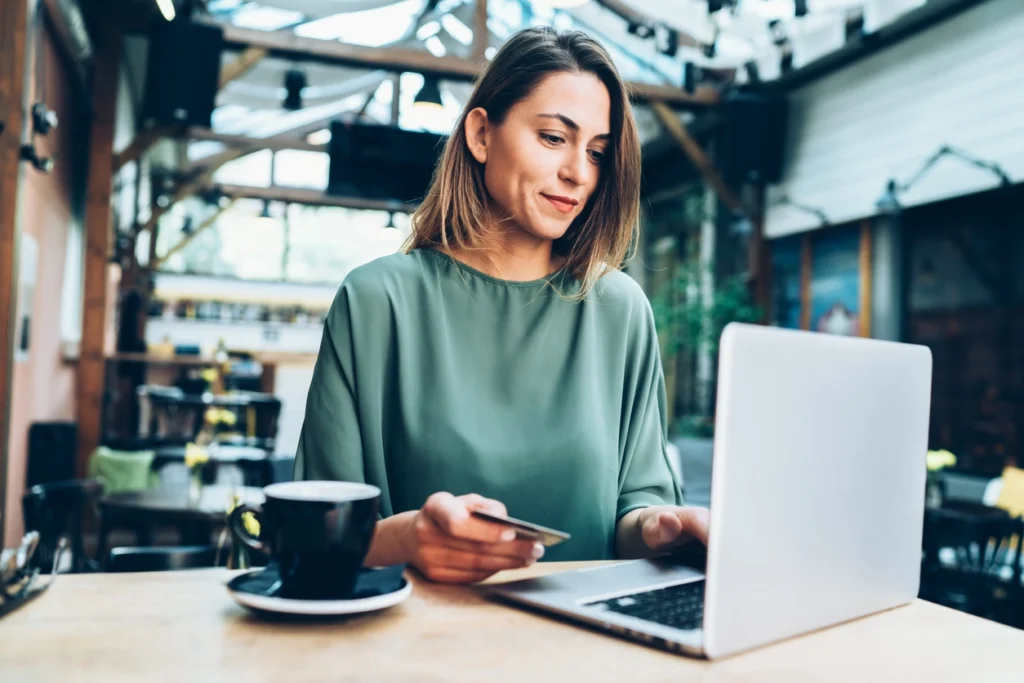Summary
- Fashion trends indicate what is popular at a given time, including fit, colors, and prints.
- It is important to know what these dressing trends are to propose designs that sell.
- Technology can help you create in line with the latest fashion trends. Try Audaces360 for free!
Fashion moves fast these days! Social media keeps everyone connected, and trends change in a blink.
Keeping up can be tough if you don’t have the right tools. You need access to information that’s always fresh and fits who you’re designing for.
That’s why we made this complete guide. It will equip you with strategies to easily identify trends as they emerge.
Ready to master trends in fashion? Enjoy your reading!
Sumário
Why follow the main dressing trends?
Staying ahead of fashion trends is essential for anyone involved in the fashion industry, from designers to retailers. Everyone should know what’s going on with trending clothing.
It allows you to create designs that resonate with current consumer preferences. This helps you compete with other brands and stay relevant in the market.
Dressing trends often reflect broader cultural shifts and interests. When you add them to your collections, you prove an understanding of your target audience.
They will feel represented and connected to your designs. This can make them more likely to attract attention and generate sales.
Additionally, when a business is at the forefront, people can recognize it as innovative and forward-thinking.
All these will help you achieve the main goal of designing clothing — generating sales.
Learn more: Uncover the benefits of fashion trend forecasting for your clothing business
So, what exactly are dressing trends?
Dressing trends are the set of clothing features that characterize a group of people during a period.
For example, think about women’s clothing trends from the 80s. What comes to your mind?
Probably oversized blazers with shoulder pads, colorful pieces, and lots of glitter. These trends embody an era and make everyone want to be a part of it.
It evokes a sense of belonging. In the past, this was something more associated with younger people.
However, the ease of access to information today has changed it. Now, all target audiences want to stay on top of dressing trends.
This presents an opportunity that designers cannot ignore in their creations.
Who sets the dressing trends?
Ok, but who decides what’s trendy and what’s not? Let’s check out the main sources.
Fashion shows
Fashion shows are a crucial source of dressing trends inspiration, showcasing the latest collections from designers and established brands.
These events provide a glimpse into upcoming trends and set the tone for the fashion season. However, it’s worth noting that not everything on the runway directly translates into street fashion.
Designers’ concepts often undergo a transformation process to adapt to real-world and consumer preferences.
Learn more: Meet 8 iconic fashion designers of the moment to inspire you
Celebrities and influencers

Celebrities and influencers have immense power to influence trends in fashion. Fans and followers often reproduce their choices.
Their public appearances and social media posts can quickly propel styles into the mainstream.
Monitoring the fashion choices of celebrities and influencers admired by your audience can be a valuable source of inspiration.
Analyze their style to gain insights into popular silhouettes, colors, patterns, and accessories.
Learn more: What are trendsetters, and why are they important to fashion?
Media and fashion magazines
Fashion magazines have been for decades a major guide to what kind of clothing we will see on the streets.
More recently, websites and blogs have also become valuable assets for staying up-to-date with trends.
They feature photo shoots, expert opinions, and forecasting, providing ideas about emerging dressing trends and styling tips.
Social media
Social media platforms like Instagram, TikTok, and Pinterest have become powerful tools for spreading trends in fashion.
Users share their style inspirations, discuss trends, and discover new looks. These aspects make online platforms a dynamic hub for exploring dressing trends.
One of the defining characteristics of social media is the rapid pace at which trends emerge and evolve.
The dynamic environment fosters the development of microtrends. They are highly specific dressing trends that resonate within niche groups.
These trends often have a short lifespan but can gain significant traction within their respective communities.
Learn more: Everything you need to know to design Gen Z fashion
Culture and art
Broader cultural trends and artistic movements can also influence fashion. Take for instance the recent rise of green practices.
It might lead to an increased interest in eco-friendly materials and designs inspired by nature.
Another example is the traditional clothing worn during musical festivals. It became very popular among younger audiences and can inspire designers to create collections to cater to this style.
Main types of dressing trends
We can divide dressing trends into 3 main types. Knowing the difference will help you make informed decisions. Let’s delve into each of them:
Megatrends
According to WGSN, a trend forecasting company, megatrends have the power to significantly impact industries for years, even decades.
They are long-lasting shifts driven by powerful forces like economics, technology, and cultural values.
These trends can change established directions and influence the development of future trends.
The impacts can extend from design aesthetics and consumer preferences to production methods and retail strategies.
Examples of megatrends encompass:
- The rise of e-commerce: a dominant force in how consumers shop.
- Increasing diversity: more size options and representation in marketing campaigns.
Learn more: Uncover the benefits of fashion trend forecasting for your clothing business
Macrotrends
Fashion macrotrends are more focused than megatrends, but still represent significant shifts in consumer preferences and design aesthetics.
They span at least five years and operate on a continuum, evolving from season to season, year to year.
Macrotrends are of paramount importance to the fashion industry and demand careful attention. Companies that ignore these trends risk becoming outdated.
Some examples of macrotrends:
- Technological advancements: 3D design and virtual shopping experiences.
- Sustainable fashion: increase of organic and recycled raw materials.
Learn more: Uncover the macro trends and their influence on the fashion world
Microtrends
Microtrends emerge within specific communities and gain mass adoption within a short timeframe, typically within two years.
The focus is often on niche aspects like patterns, styles, or aesthetics. They cater to a particular audience rather than encompassing the entire fashion industry.
You should watch these trends and analyze whether they are suitable for your audience. Not every microtrend is relevant to your creations.
Trying to follow every microtrend may not be beneficial. It can dilute your brand identity and lead to problems in production.
Examples of microtrends:
- Prints: animal prints and tie-dye.
- Aesthetics: Y2K fashion revival and cottagecore.
How – and where – to research dressing trends?
Let’s get to work! Here are some tools to help you find dressing trends:
- Box1824: a trend research agency specializing in consumer behavior and innovation.
- Google Trends: a tool that uses data to measure search requests made to Google.
- Pinterest: a visual discovery engine for finding ideas and inspirations.
- TrendWatching: a resource for consumer trends, insights, and innovations.
- WGSN: a trend forecasting company that uses data science to make predictions.
How does technology manifest in dressing trends?
Technology is a driving force behind trends, no matter the field. See how it shapes the fashion landscape:
E-commerce

Technology has transformed the way we shop, making it easier and more convenient than ever.
Thanks to e-commerce it is possible to search, compare, and purchase items from the palm of our hands.
Online platforms like e-commerce giants and marketplaces have become a primary destination for fashion customers.
The wide variety of choices, personalized recommendations, and convenient checkout processes have prompted some people to prefer online shopping over traditional physical stores.
Learn more: Boost your e-commerce store with a clothing virtual fitting room
Personalization
Advances in data analytics and Artificial Intelligence have enabled fashion companies and retailers to personalize their offerings.
By analyzing customer data, purchase history, and online behavior, brands can tailor product recommendations, curate personalized collections, and provide targeted marketing campaigns.
This personalized approach enhances the shopping experience, increases customer engagement, and drives sales.
Sustainability
Technology is playing a crucial role in promoting sustainable practices. It has a substantial effect in reducing the environmental impact of the fashion industry.
Some examples are the development of eco-friendly materials, greener manufacturing processes, and circular economy models.
Consumers are increasingly seeking out sustainable fashion options, and technology is enabling brands to meet this growing demand.
Digital Fabrication
Digital fabrication techniques are transforming the way companies design and produce garments.
Technologies like CAD software (Computer-Aided Design) and 3D design solutions allow for greater quality and precision in creating unique designs.
This streamlines processes, speeding up collection launch times. Moreover, it reduces material use, which translates into cost savings.
Augmented Reality and Virtual Reality
Augmented Reality (AR) and Virtual Reality (VR) are emerging technologies that are enhancing the way we interact with fashion.
Retailers are adopting AR mirrors and interactive displays stores to offer personalized shopping experiences.
Customers can see themselves wearing different garments, view product information, and even receive style recommendations based on their preferences.
While VR technology enables fashion brands to host virtual fashion shows. It provides an immersive experience for viewers who can attend from anywhere in the world.
As these technologies evolve, we can expect to see more innovative applications in the years to come.
Learn more: Discover how immersive fashion can benefit your apparel business
Incorporate dressing trends into your collection with Audaces360

Now that you know the best ways to research dressing trends, see how to use technology even more to your advantage.
The comprehensive Audaces360 solution has the power to streamline your work at every stage of the creative process.
Audaces Fashion Studio
Audaces Fashion Studio was developed to create 3D designs relying on various tools and possibilities. Enhance the agility and quality of your designs with this cutting-edge technology!
It allows you to simulate garments on a three-dimensional mannequin, experimenting with colors, textures, and prints with ease.
Achieve perfect color accuracy and ensure a flawless fit with advanced simulation tools, simplifying the entire design workflow.
Audaces Idea
Audaces Idea empowers you to create detailed and accurate technical drawings with ease. With just a few clicks, you can apply prints to your digital designs, quickly visualizing your creations.
You can also calculate the pre-cost of your garment samples and tech packs right within the same platform.
This eliminates the need for manual calculations and ensures control of production costs from the very beginning.
Audaces Sofia
Audaces Sofia is a revolutionary fashion Artificial Intelligence (AI). This solution is your intelligent design partner, always ready to empower you and assist in your creative process.
It combines your commands and its database to generate design options tailored to your vision.
Stop waiting for inspiration to strike. With Audaces Sofia, you have the power to unlock your full creative potential and transform your designs.
Explore the best ways to apply Artificial Intelligence in your fashion creation. Download our infographic for free!
FAQ
It allows you to create designs that resonate with current consumer preferences. This helps you compete with other brands and stay relevant in the market.
Dressing trends are the set of clothing features that characterize a group of people during a period.
Fashion shows, celebrities and influencers, media and fashion magazines, social media, and culture and art.










